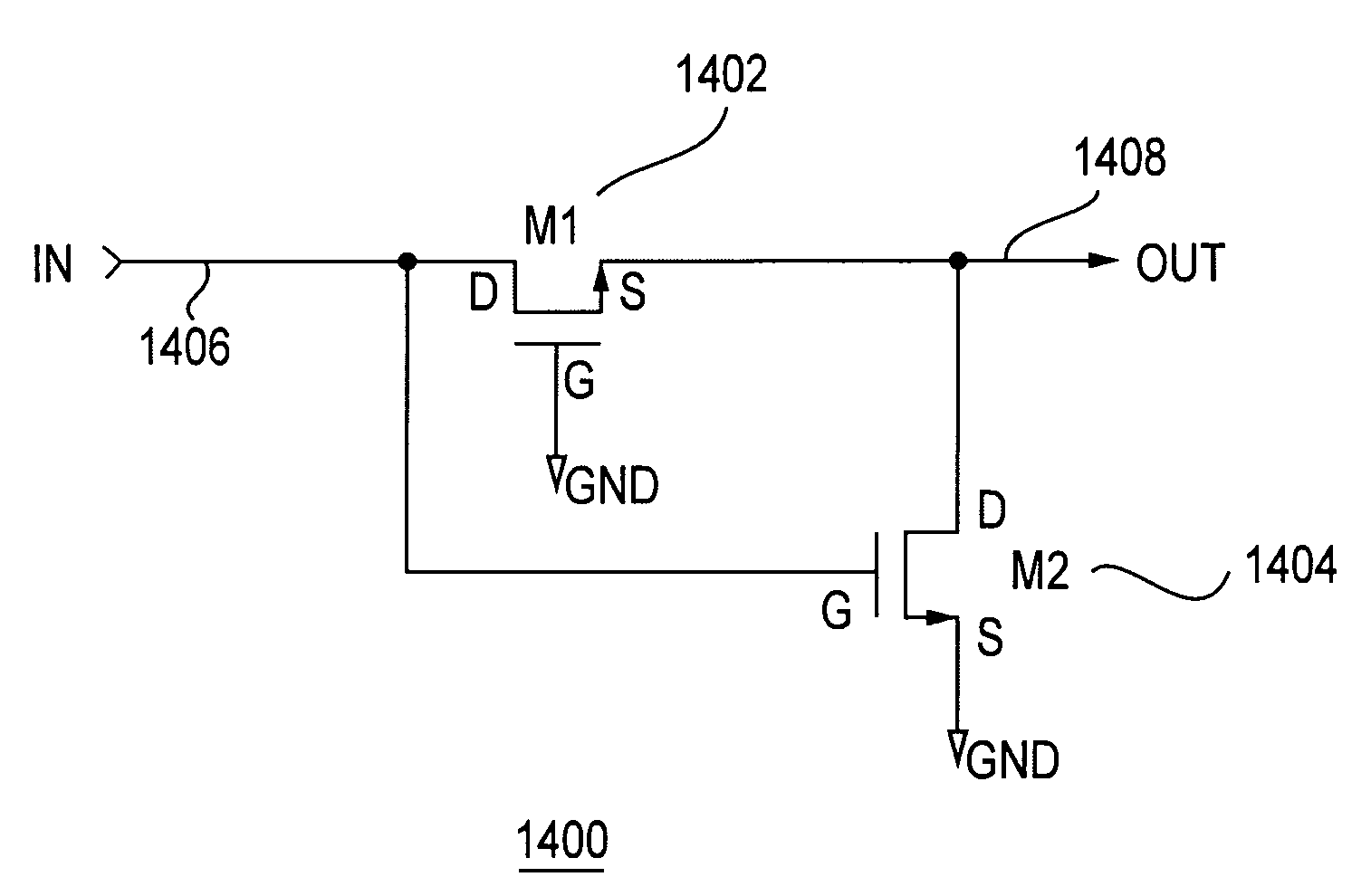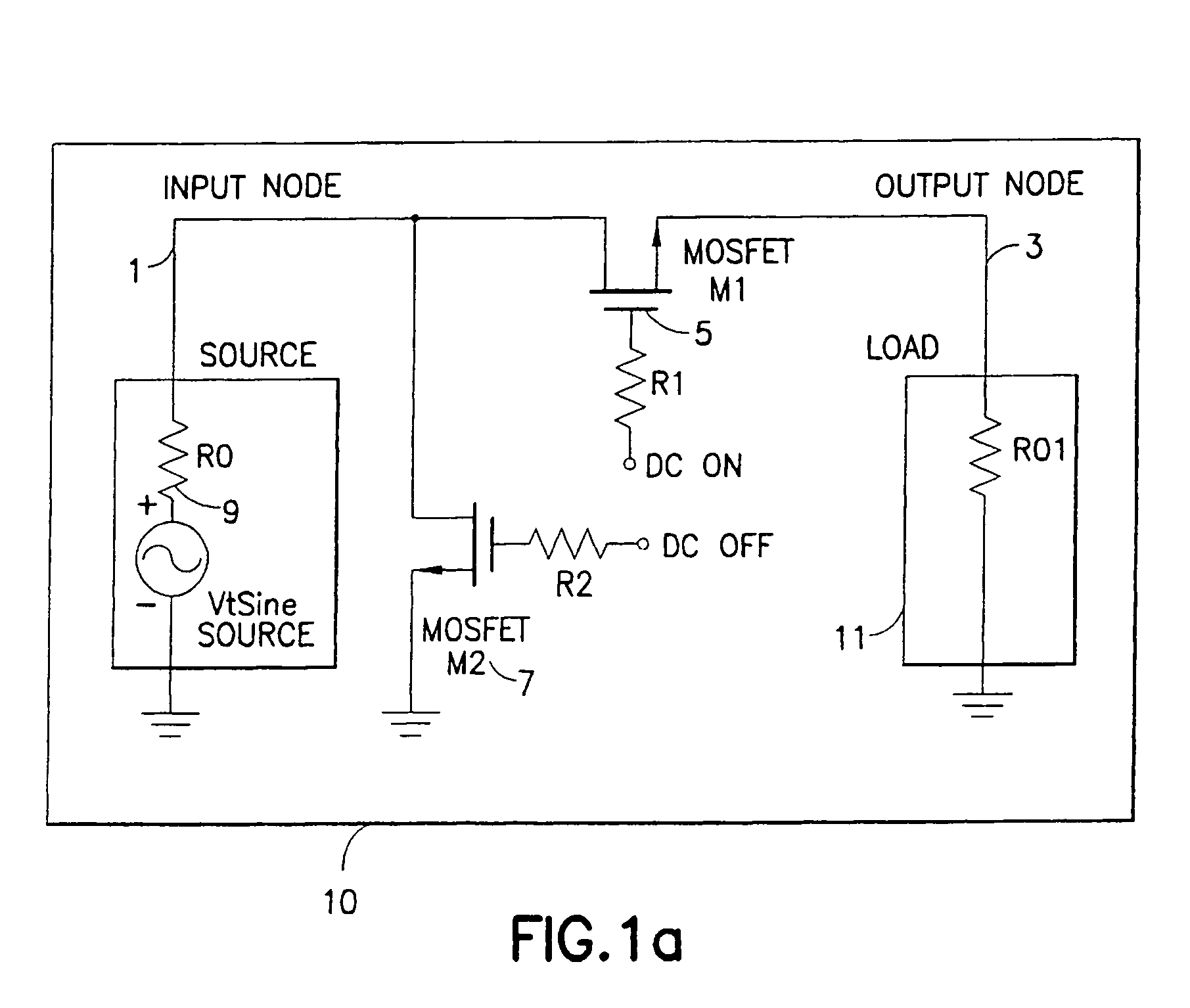Switch circuit and method of switching radio frequency signals
- Summary
- Abstract
- Description
- Claims
- Application Information
AI Technical Summary
Benefits of technology
Problems solved by technology
Method used
Image
Examples
first embodiment
A First Embodiment
[0077]As shown in FIG. 4, one embodiment of the fully integrated RF switch 100 includes a negative voltage generator or charge pump 120. The negative voltage generator 120 generates the negative power supply voltage (specified hereafter as “−Vdd”) required by other circuits of the fully integrated RF switch 100. Two sets of inputs are provided to the negative voltage generator 120: a positive DC power supply voltage signal (Vdd) 122; and a clocking input (shown in the figure as a single input signal, “Clk”) 124. Although the clocking input 124 is shown as a single input signal in FIG. 4, as described below with reference to FIG. 5b, in some embodiments of the RF switch, the clocking input 124 may comprise two or more clock input signals.
[0078]In addition, in the embodiment shown in FIG. 4, the positive supply voltage that is input to the negative voltage generator circuit 120 comprises a 3 VDC power supply. However, other power supply levels may be used without dep...
improved embodiment
[0127]As described above with reference to FIGS. 9a, 9b, and 10, it is sometimes desirable to limit the voltage levels applied to certain selected nodes within an electronic circuit in order to prevent excessive voltage swings from detrimentally affecting performance and reliability of the circuit. For example, as described above, unless a voltage reduction circuit is employed, voltage levels of 2*Vdd can be applied across the gate oxides of the feedback inverters 304, 310 of the level shifter 300 (see FIG. 6a). For example, in one embodiment where Vdd=+3V, and −Vdd (or “Vss”)=negative 3V, a gate-to-source voltage (Vgs) of 6 Volts can be applied to the gate oxides of the feedback inverters 304, 310. As described above, such excessive voltages can detrimentally affect both the performance and reliability of the level shifter 300, and can eventually irreparably harm the feedback inverters 304, 310. Therefore, as described above with reference to the first exemplary embodiment of the v...
PUM
 Login to View More
Login to View More Abstract
Description
Claims
Application Information
 Login to View More
Login to View More - R&D
- Intellectual Property
- Life Sciences
- Materials
- Tech Scout
- Unparalleled Data Quality
- Higher Quality Content
- 60% Fewer Hallucinations
Browse by: Latest US Patents, China's latest patents, Technical Efficacy Thesaurus, Application Domain, Technology Topic, Popular Technical Reports.
© 2025 PatSnap. All rights reserved.Legal|Privacy policy|Modern Slavery Act Transparency Statement|Sitemap|About US| Contact US: help@patsnap.com



